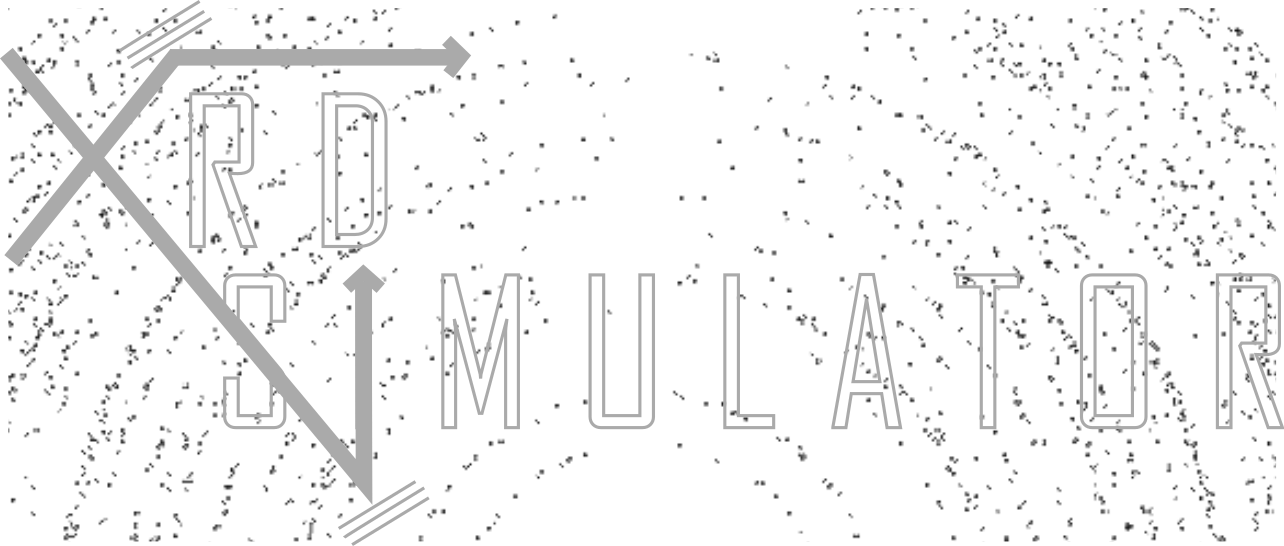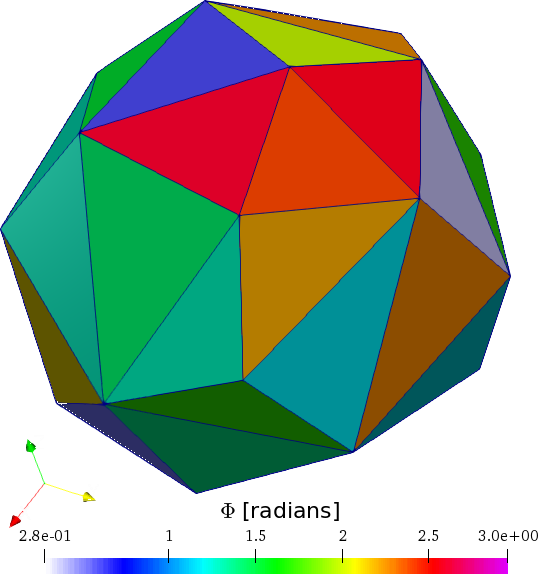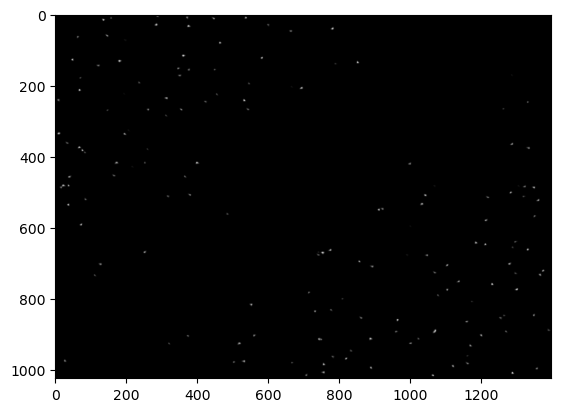用于模拟s3dxrd类型实验的衍射模拟工具。
项目描述











模拟多晶在3D中的X射线衍射。

X射线衍射模拟器包定义了多晶为四面体单晶的网格,并通过2D离散探测器阵列模拟衍射,同时样品绕任意旋转轴摇摆。
xrd_simulator最初开发是为了回答关于扫描X射线衍射实验中测量优化的问题。然而,xrd_simulator可以模拟广泛的实验衍射设置。基本思想是样品和束拓扑可以任意指定,它们之间的相互作用可以通过样品摇摆来模拟。这意味着可以模拟标准的“非粉末”实验,例如扫描-3dxrd和全场3dxrd(或如果您喜欢,HEDM),还可以模拟更高级的测量序列,例如螺旋扫描等。还可以使用取向密度函数作为输入来模拟类似粉末的情景。
简介
在阅读所有无聊的文档(此处托管)之前,让我们先深入研究一些端到端示例,以便我们能够开始一个良好的体验。
xrd_simulator是基于四个Python对象构建的,这些对象反映了衍射实验
一束X射线(使用xrd_simulator.beam模块)
一个二维面积探测器(使用xrd_simulator.detector模块)
一个三维多晶样品(使用xrd_simulator.polycrystal模块)
一个刚体样品的运动(使用xrd_simulator.motion模块)
一旦定义了这些对象,就可以让探测器在样品进行规定的刚体运动的同时,被X射线光束照射时收集多晶的散射。
让我们开始构建一些X射线
import numpy as np from xrd_simulator.beam import Beam # The beam of xrays is represented as a convex polyhedron # We specify the vertices in a numpy array. beam_vertices = np.array([ [-1e6, -500., -500.], [-1e6, 500., -500.], [-1e6, 500., 500.], [-1e6, -500., 500.], [1e6, -500., -500.], [1e6, 500., -500.], [1e6, 500., 500.], [1e6, -500., 500.]]) beam = Beam( beam_vertices, xray_propagation_direction=np.array([1., 0., 0.]), wavelength=0.28523, polarization_vector=np.array([0., 1., 0.]))
我们还需要定义一个探测器
from xrd_simulator.detector import Detector # The detector plane is defined by it's corner coordinates det_corner_0,det_corner_1,det_corner_2 detector = Detector(pixel_size_z=75.0, pixel_size_y=55.0, det_corner_0=np.array([142938.3, -38400., -38400.]), det_corner_1=np.array([142938.3, 38400., -38400.]), det_corner_2=np.array([142938.3, -38400., 38400.]))
接下来,我们生产一个样品,为此我们首先需要定义一个描述样品拓扑结构的网格,在这个例子中,我们使样品形状为球体
from xrd_simulator.mesh import TetraMesh # xrd_simulator supports several ways to generate a mesh, here we # generate meshed solid sphere using a level set. mesh = TetraMesh.generate_mesh_from_levelset( level_set=lambda x: np.linalg.norm(x) - 768.0, bounding_radius=769.0, max_cell_circumradius=450.)
样品中的每个元素都由一些材料或“相”组成,我们通过一个xrd_simulator.phase.Phase对象的列表定义现有的相,在这个例子中只有一个相存在
from xrd_simulator.phase import Phase quartz = Phase(unit_cell=[4.926, 4.926, 5.4189, 90., 90., 120.], sgname='P3221', # (Quartz) path_to_cif_file=None # phases can be defined from crystalographic information files )
现在可以创建多晶样品了。在这个例子中,晶粒具有随机方向,而样品中的应变均匀为零
from scipy.spatial.transform import Rotation as R from xrd_simulator.polycrystal import Polycrystal orientation = R.random(mesh.number_of_elements).as_matrix() polycrystal = Polycrystal(mesh, orientation, strain=np.zeros((3, 3)), phases=quartz, element_phase_map=None)
我们可以使用内置的save()命令将多晶保存到磁盘上,如下所示
polycrystal.save('my_polycrystal', save_mesh_as_xdmf=True)
我们可以通过将.xdmf文件加载到您最喜欢的3D渲染程序中来看样品。在paraview中,根据其中一个欧拉角着色的样品看起来如下所示

现在我们可以定义样品在积分衍射信号时的运动
from xrd_simulator.motion import RigidBodyMotion motion = RigidBodyMotion(rotation_axis=np.array([0, 1/np.sqrt(2), -1/np.sqrt(2)]), rotation_angle=np.radians(1.0), translation=np.array([123, -153.3, 3.42]))
现在我们有了实验设置,我们可以通过让光束和探测器与样品相互作用来收集衍射
polycrystal.diffract(beam, detector, motion) diffraction_pattern = detector.render(frames_to_render=0, lorentz=False, polarization=False, structure_factor=False, method="project")
生成的渲染探测器帧将类似于下面的图。注意,由于晶粒方向是随机生成的,衍射点的位置可能会变化!
import matplotlib.pyplot as plt fig,ax = plt.subplots(1,1) ax.imshow(diffraction_pattern, cmap='gray') plt.show()

要计算多个帧,只需更改运动并再次收集衍射。每次计算之前,可以使用相同的运动或另一种运动来移动样品。
polycrystal.transform(motion, time=1.0) polycrystal.diffract(beam, detector, motion)
实验设置和强度渲染的选项还有很多,尽情实验!上面的示例代码可以在这里找到一个单独的.py文件。
安装
Anaconda安装(Linux和Macos)
xrd_simulator在conda-forge频道上分发,安装xrd_simulator包的首选方法是使用Anaconda
conda install -c conda-forge xrd_simulator conda create -n xrd_simulator conda activate xrd_simulator
这意味着它可以在操作系统之间工作,并需要一个Anaconda安装。
(xrd_simulator的conda-forge饲料可以在这里找到。)
Anaconda安装(Windows)
要在Windows上使用Anaconda安装,您必须确保系统上预先安装了pygalmesh的外部依赖项。有关安装这些软件包的文档可以在其他地方找到。
Pip安装
Pip安装是可能的,但是必须在系统上预先安装pygalmesh的外部依赖项。这些软件包的安装将取决于操作系统,有关文档可以在其他地方找到。
pip install xrd-simulator
源安装
当然,也可以从源代码安装
git clone https://github.com/FABLE-3DXRD/xrd_simulator.git cd xrd_simulator python setup.py install
这又将需要事先解决pygalmesh依赖项。
致谢
xrd_simulator很好地利用了xfab和pygalmesh。这些存储库的源代码可以在以下位置找到
项目详情
下载文件
下载您平台的文件。如果您不确定选择哪个,请了解更多关于安装包的信息。
源代码分布
构建分布
xrd_simulator-0.4.1.tar.gz的哈希值
| 算法 | 哈希摘要 | |
|---|---|---|
| SHA256 | 25a3ebdc215d74bc1cccb626b61e3ad5a7bcc2de8f6a0e796bd0a42d371a8a42 |
|
| MD5 | abe5a2d25c5c3872e94ec90b1674ccb4 |
|
| BLAKE2b-256 | b94c3a3b87b3a74b71921b9f1bf628a483b62dc69c727fa262550e7e741daa0f |
xrd_simulator-0.4.1-py3-none-any.whl的哈希值
| 算法 | 哈希摘要 | |
|---|---|---|
| SHA256 | b3449f86af526786915f23897a3790fdebe372813a010cca253ce1b4a5cb4848 |
|
| MD5 | 6442cc9e464ba82fb881d06969bdbe9b |
|
| BLAKE2b-256 | ac45993324e43026a39ac6f2cef7538f88a8a681f20f9b24dc399cd8d076c8c9 |



